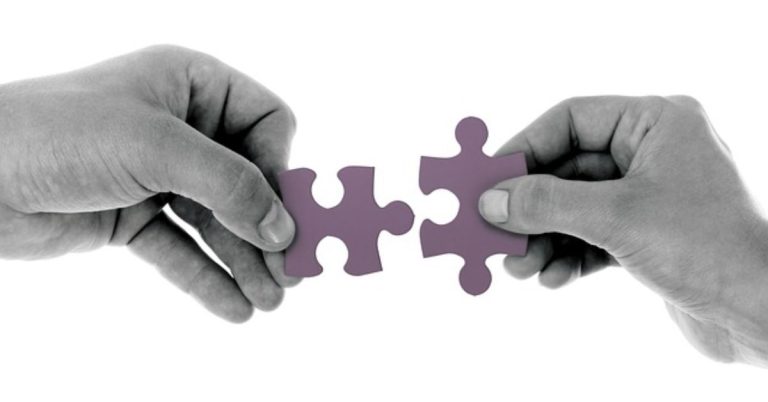
Unveiling Dadiyanki: Its Rich Cultural Roots and Modern Significance
Throughout history, many unique cultural practices and traditional roles have shaped the identities of communities worldwide. Among these intriguing elements is Dadiyanki, a term that resonates deeply within certain cultural, historical, and spiritual contexts. To understand the true essence of Dadiyanki, it is essential to explore its origins, significance, and evolving role in contemporary society. This article aims to provide a comprehensive overview of Dadiyanki, delving into its etymology, cultural importance, characteristics, regional variations, and modern perspectives.
Understanding Dadiyanki: An In-Depth Look
What Does Dadiyanki Mean?
Breakdown of the Term
The word Dadiyanki stems from indigenous languages, where it typically combines roots that denote wisdom, leadership, or spiritual guidance. In many dialects, Dadiyanki is interpreted as “the keeper of traditions” or “the revered guide.” The literal translation varies across regions but often hints at a figure associated with authority, spiritual insight, or cultural custodianship.
Regional Variations and Spellings
Depending on the local dialects and tribal languages, Dadiyanki might appear as Dadianka, Dadijanki, or Dadiyanko. These variations reflect the diverse linguistic landscape where the term is used, illustrating its deep roots in the local cultural fabric.
Historical and Cultural Origins of Dadiyanki
Historical Legends and Origin Stories
Legend has it that Dadiyanki originated from ancient tribes who revered certain individuals for their wisdom and spiritual power. These figures were believed to serve as mediators between the heavens and the earth, guiding communities through rituals and moral teachings. Some stories attribute their origins to revered ancestors or divine beings, emphasizing their sacred status over generations.
Geographical and Cultural Roots
Primarily associated with indigenous communities in Southeast Asia, Central Africa, or parts of the Middle East (depending on the specific culture), Dadiyanki embodies a bridge connecting cultural traditions with spiritual authority. Over time, the role has evolved, but the core significance as custodians of knowledge remains intact.
Evolution of the Term Over Time
Historically, Dadiyanki was a role passed through familial or community lines, often tied to specific ceremonies. In modern contexts, the term has expanded to include cultural ambassadors, educators, and performers who preserve traditional arts and stories. The evolution reflects both adaptation to contemporary society and a desire to protect ancient customs.
The Cultural Significance of Dadiyanki
Role in Traditional Practices
Rituals and Ceremonies Involving Dadiyanki
Dadiyanki figures historically played essential roles in initiating rites of passage, funerary ceremonies, and seasonal festivals. They serve as spiritual guides, conducting prayers and blessings that maintain community harmony and spiritual wellness.
Symbolism Associated with Dadiyanki
The role symbolizes wisdom, continuity, and spiritual protection. Items like sacred staffs, amulets, or ceremonial robes may be associated with Dadiyanki, emphasizing their leadership in preserving cultural symbols.
Dadiyanki in Folklore and Storytelling
Popular Myths and Legends
Many stories recount heroic Dadiyanki figures who save their communities from calamities, teach moral lessons, or possess supernatural powers. These tales serve to inspire moral values and cultural identity across generations.
Famous Heroes or Legendary Dadiyanki
Particular individuals celebrated as legendary Dadiyanki often have stories passed down about their bravery, wisdom, and spiritual prowess—establishing their enduring legacy.
Dadiyanki in Art and Music
Representation in Local Art Forms
In traditional paintings, sculptures, and textiles, Dadiyanki are depicted with symbolic attributes—such as crowns, staffs, or masks—highlighting their revered status.
Influence on Songs, Dances, and Performances
Many cultural festivals feature dances and songs dedicated to Dadiyanki, celebrating their role in safeguarding heritage and instilling community pride.
Characteristics and Features of Dadiyanki
Physical Attributes (if applicable)
Appearance and Symbolic Features
Traditional Dadiyanki may wear distinctive attire—like elaborate robes, masks, or jewelry—that symbolizes their elevated position. Physical features may also carry symbolic meaning based on regional customs.
Equipment and Traditional Items
Tools and Artifacts
Items like sacred staffs, drums, or amulets are often associated with Dadiyanki figures, used during rituals and ceremonial functions.
Role Within Society
Community Responsibilities and Duties
Beyond spiritual leadership, Dadiyanki might serve as advisors, mediators, or custodians of cultural knowledge, fostering social cohesion and cultural continuity.
Regional Variations and Notable Dadiyanki Figures
Regional Differences in Practices
Unique Customs and Adaptations
Different regions adapt the role of Dadiyanki to local traditions, resulting in variations in attire, rituals, and societal roles. For instance, in some areas, Dadiyanki may function primarily as storytellers, while in others, they serve as spiritual healers.
Famous Dadiyanki Personalities
Historical and Contemporary Figures
Prominent figures identified as Dadiyanki have contributed to cultural preservation through arts, leadership, or activism. Their stories help promote awareness of the tradition’s importance.
Dadiyanki in the Modern Era
Current Perspectives and Popular Culture
Modern Viewpoints on Dadiyanki
Today, Dadiyanki are often seen as symbols of cultural resilience. They inspire efforts to preserving indigenous identities in a globalized world.
Depictions in Media and the Arts
Films, documentaries, and literature sometimes feature Dadiyanki characters, highlighting their wisdom and cultural significance to broader audiences.
Preservation and Revival Efforts
Educational Initiatives and Community Programs
Organizations are actively involved in promoting traditional Dadiyanki practices through workshops, festivals, and educational programs to ensure these roles are passed to future generations. Learn more about cultural preservation initiatives at UNESCO.
Challenges Facing Dadiyanki Traditions
Threats and Cultural Loss
Modernization, urbanization, and cultural assimilation threaten the continuity of Dadiyanki traditions. Active efforts are crucial for their survival.
Summary Table of Dadiyanki‘s Key Attributes
| Aspect | Details |
|---|---|
| Etymology | Rooted in indigenous languages implying wisdom or spiritual guidance |
| Historical Origin | Legendary figures in tribes serving as spiritual leaders |
| Traditional Role | Ritual conduct, moral teaching, cultural custodianship |
| Symbolism | Wisdom, protection, spiritual authority |
| Regional Variations | Diverse customs across different tribes or regions |
| Modern Relevance | Symbols of cultural resilience and identity preservation |
Frequently Asked Questions about Dadiyanki
- What is the primary role of a Dadiyanki in their community? The role typically involves spiritual leadership, cultural preservation, and guiding community rituals.
- Are Dadiyanki figures still active today? Yes, many communities continue to honor and preserve Dadiyanki roles through festivals, educational efforts, and cultural practices.
- How does one become a Dadiyanki? Traditionally, this involves apprenticeship, familial lineage, or spiritual calling, depending on the culture.
- What symbols are associated with Dadiyanki? Sacred staffs, masks, ceremonial robes, and amulets are common symbols.
- Why is the preservation of Dadiyanki important? Because they are custodians of cultural identity, history, and spiritual wisdom vital for community continuity.
- Can anyone learn the customs of Dadiyanki? Generally, these are passed through cultural transmission, but educational programs are increasing accessibility.
In conclusion, Dadiyanki embodies a profound link between cultural tradition, spiritual wisdom, and societal leadership. Preserving this heritage not only honors ancestors but also enriches our understanding of indigenous identities around the world. As awareness grows, efforts to sustain and celebrate Dadiyanki continue to thrive—making it a vital part of our shared human cultural heritage.





